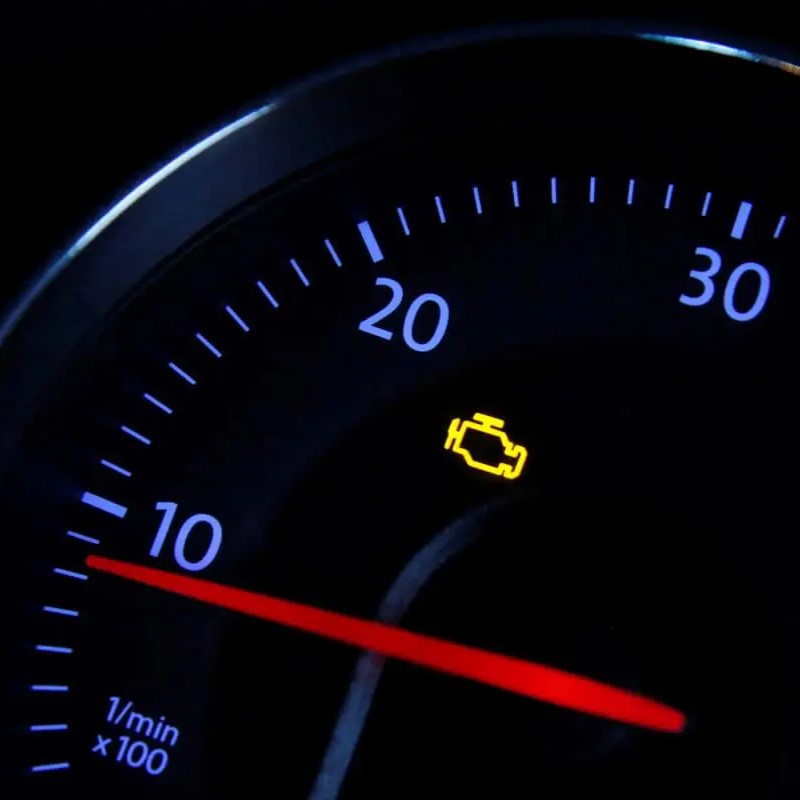Imagine cruising down the highway, enjoying the scenery, when a bright yellow light suddenly illuminates your dashboard. It’s the EPS light, and a jolt of panic shoots through you. What does it mean? Should you pull over immediately? Here’s a comprehensive guide to understanding the EPS warning light, its potential causes, and the recommended course of action.
What is the EPS Light?
Unlike older vehicles that relied on hydraulics for steering assistance, modern cars increasingly use electronic power steering (EPS) systems. The EPS light, therefore, serves as a critical warning indicator for any malfunctions within this electronic system. It essentially acts as your car’s way of saying, “Hey, something’s not quite right with the steering!”
Why Does the EPS Light Come On?
Several factors can trigger the EPS light. Here’s a breakdown of some common culprits:
- Sensor Issues: The EPS system relies on various sensors to monitor steering wheel position, vehicle speed, and torque. A malfunction in any of these sensors can disrupt communication within the system, causing the light to illuminate.
- Electrical Problems: Faulty wiring connections, a failing battery, or alternator problems can disrupt the electrical flow to the EPS system. This disruption can lead to the warning light coming on.
- Motor Malfunction: The EPS motor is the heart of the system, providing the electronic assistance for steering. If this motor malfunctions, it can trigger the EPS light and potentially lead to a heavier steering feel.
- Software Glitches: Modern cars are complex machines, and even the EPS system can experience software glitches. In rare instances, a temporary glitch might cause the light to flicker on momentarily before resetting itself.

What Happens When the EPS Light Comes On?
The most immediate consequence of an illuminated EPS light is often a noticeable increase in steering effort. Without the electronic assistance, maneuvering the steering wheel will feel heavier, especially at lower speeds. However, the severity of the impact can vary depending on the underlying cause.
Should You Pull Over Immediately?
While a lit EPS light is certainly a cause for concern, it doesn’t necessarily mean you need to pull over abruptly and bring your car to a complete stop. If you’re on a highway, prioritize reaching a safe exit or shoulder before stopping. Here’s how to proceed:
- Maintain Calm: Panicking can cloud your judgment. Take a deep breath and assess the situation.
- Find a Safe Spot: If possible, gradually steer towards a safe location like a designated pull-off or exit ramp. Avoid stopping in the middle of traffic.
- Turn Off and Restart: Sometimes, a simple power cycle can resolve temporary glitches. Try turning off the engine completely and restarting it. If the light goes off, you can cautiously continue your journey, but remain vigilant.
What to Do Next?
If the EPS light persists after restarting, it’s crucial to seek professional help. Here are your options:
- Consult Your Owner’s Manual: Your car’s manual might offer specific troubleshooting steps or provide additional information about the EPS system and warning light behavior.
- Schedule a Service Appointment: Don’t delay! A qualified mechanic can diagnose the problem using specialized diagnostic tools. They can pinpoint the exact cause and recommend the appropriate repairs.

Living with the EPS Light On
Driving with a lit EPS light is risky. Here’s why you shouldn’t ignore it:
- Reduced Maneuverability: The increased steering effort can make handling the car more challenging, especially during emergencies or tight maneuvers.
- Increased Accident Risk: Difficulty in steering can significantly elevate your risk of accidents, particularly at higher speeds.
- Potential for Further Damage: Ignoring the issue can lead to more significant problems within the EPS system, potentially resulting in costly repairs later.
Importance of following manufacturer’s guidelines for fluid change
Your car is a complex machine, and just like any intricate system, it thrives on routine maintenance. A crucial aspect of this maintenance involves following the manufacturer’s recommended schedule for fluid changes and system checks. While it might seem like a hassle to remember oil changes or top off fluids, neglecting these seemingly minor tasks can lead to expensive repairs and even safety hazards down the road.
Fresh Fluids, Smooth Operation
Engine oil is the lifeblood of your car’s engine. Over time, it breaks down, accumulates contaminants, and loses its lubricating properties. Sticking to the manufacturer’s recommended oil change interval ensures your engine is constantly bathed in clean oil, minimizing friction and wear on critical components. This translates to smoother operation, improved fuel efficiency, and ultimately, a longer lifespan for your engine.
Beyond Oil: A Symphony of Fluids
Modern vehicles rely on a multitude of fluids beyond engine oil. Transmission fluid ensures smooth gear changes, power steering fluid makes maneuvering effortless, and coolant keeps the engine from overheating. Each fluid has a specific lifespan and function, and neglecting them can have dire consequences. For instance, skipping a transmission fluid change can lead to harsh shifting and eventual transmission failure, while ignoring coolant levels can cause your engine to overheat, potentially leading to catastrophic damage.
Early Detection, Prevented Disaster
Manufacturer-recommended system checks are not just about topping off fluids. They involve visual inspections of belts, hoses, and other critical components for signs of wear and tear. Early detection of a minor leak or a cracked belt can save you from a major breakdown on the road. Additionally, some checks involve testing brake pads or tire pressure, directly impacting your safety. By addressing these potential issues proactively, you’re preventing them from snowballing into bigger problems and ensuring your car operates safely.
Peace of Mind on the Road
Following the manufacturer’s recommended maintenance schedule brings peace of mind. You can embark on road trips or navigate daily commutes with the confidence that your car has been meticulously cared for. It also helps maintain your car’s resale value – a car with a documented service history is demonstrably more reliable and fetches a better price.
The Takeaway: A Stitch in Time Saves Nine
While the immediate gratification of saving a few bucks by skipping a fluid change might be tempting, the long-term consequences can be far more costly. By adhering to the manufacturer’s recommended schedule, you’re investing in the health and longevity of your car, ensuring smooth operation, preventing breakdowns, and keeping yourself safe on the road. Remember, a little effort now can save you a lot of trouble – and money – down the line.
Prevention is Key
While unexpected malfunctions can occur, here are some preventive measures to help maintain a healthy EPS system:
- Regular Maintenance: Schedule routine maintenance checks as recommended by your car’s manufacturer. These checks might include verifying electrical connections and software updates for the EPS system.
- Avoid Harsh Maneuvers: Aggressive steering or constantly putting excessive strain on the system can contribute to wear and tear.
- Battery Care: Ensure your car battery is in good condition and functioning properly. A failing battery can disrupt the electrical flow to the EPS.
The EPS light serves as a vital warning system. By understanding its significance and taking prompt action, you can ensure your car’s steering performance remains safe and reliable.

In conclusion, understanding the significance of the EPS light and taking immediate action when it illuminates is crucial for maintaining the safety and reliability of your car’s steering performance. Ignoring this warning system can lead to difficulties in controlling your vehicle and increase the risk of accidents. By staying proactive and seeking professional help when needed, you can ensure that your car’s steering remains in optimal condition.





